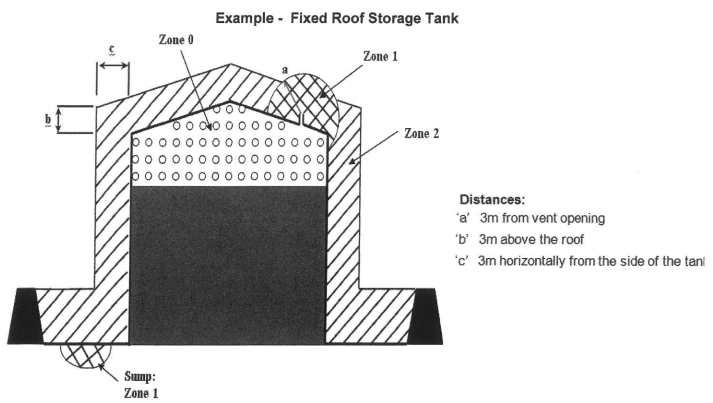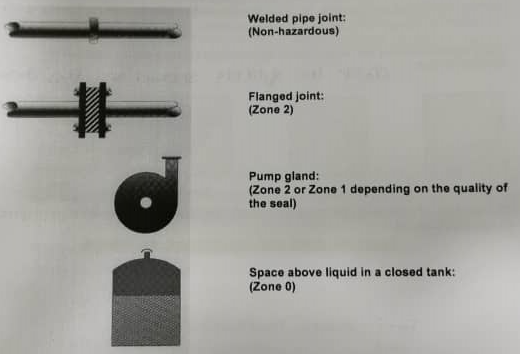A hazardous area is defined as:
‘An area in which an explosive gas atmosphere is present, or may be expected to be present, in quantities such as to require special precautions for the construction, installation and use of equipment.’
A non-hazardous area is defined as:
‘An area in which an explosive gas atmosphere is not expected to be present in quantities such as to require special precautions for the construction, installation and use of equipment.’
Zones #
Zoning is a means of representing the probability, frequency and duration of an explosive gas atmosphere, based on the identification and consideration of each and every source of release in the given areas of an installation, including the:
- Grade of release (continuous, primary or secondary)
- Presence of artificial ventilation
- Extent and volume of release
Hazardous areas are divided into three Zones which represent the risk in terms of the probability, frequency and duration of a release. Area classification assists in the proper selection and installation of equipment.
The three Zones, as defined in IEC60079-10-1 (Classification of hazardous areas – Explosive gas atmospheres), are as follows:
Zone 0 – In this Zone, an explosive gas atmosphere is continuously present, or present for
long periods or frequently.
Zone 1 – In this Zone, an explosive gas atmosphere is likely to occur in normal operation
occasionally.
Zone 2 – In this Zone, an explosive gas atmosphere is not likely to occur in normal operation
but if it does occur, will persist for a short period only.
The extent of the zones will appear on the hazardous area drawings for the plant or installation. These drawings should also include details of the required equipment group, temperature classes, and the equipment protection level (see Unit 02), for electrical equipment installed at each location. E.g. Zone1 IIC T6 EPL Gb
Zone Representation #
Zone representation for “Area Classification Diagrams’ as recommended in IEC60079-10-1

The method of indicating the zone on a particular hazardous area drawing may not be to IEC60079-10.
Check the notes and key given on the drawing

Sources of Release #





